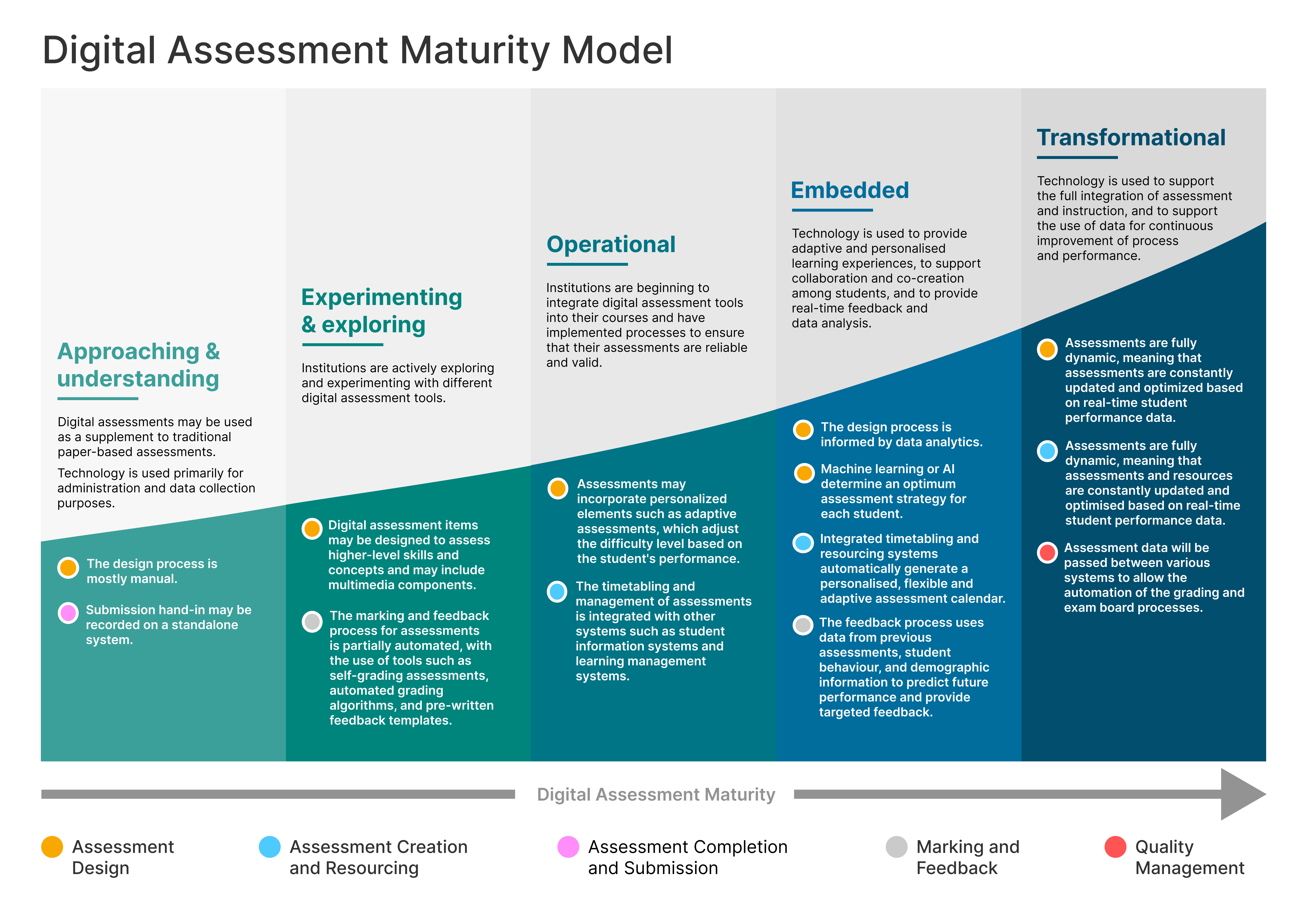As part of our work on a digital assessment maturity model, this post contains a more in-depth look at the assessment design phase.

Assessment design
When approaching and understanding assessment design, most assessment will be simple, and often paper-based. The design process is often manual. Digital assessment may be sometimes used to supplement traditional assessment methods.
Experimenting with digital assessment may introduce additional modes of assessment, such as MCQs, and may use existing technologies, such as the VLE tools to introduce elements of question randomization and auto grading of basic assessments. The assessment process may involve increased digitalization. The use of digital assessment may be focused on low-/no-stakes formative assessment initially. Technology use is primarily aimed at replicating existing methods of assessing.
As things become operational, elements of personalization may become apparent, especially to support additional needs. There may be some level of automation of the design process through the use of rubric builders or shared resources. Disciplines may receive additional software to support subject-specific requirements, such as mathematical notation. Assessment methods or approaches may be augmented through the use of technology. Specific technologies may be used beyond the VLE, such as in-class MCQ services.
The shift to embedded digital assessment, will see the design process informed by data analytics and may include elements of machine learning to determine the optimum assessment strategy. There will be increased personalization designed into assessments. The use of automated knowledge and application checks as formative assessment will be extensive, giving students real-time feedback on their performance. The assessment methods or approaches may be significantly modified through the use of technology.
In a transformational scenario, assessments are fully dynamic, constantly updated, and personalised to each student. Machine learning algorithms may refine the assessment design to optimise the assessment experience. Assessment design will be integrated into a larger digital learning ecosystem, made of a range of specific services to enable variety and flexibility for staff and students. Assessments will assess a wide-range of skills and applications of knowledge. Assessment design is likely significantly reimagined through the use of technology.
Read more
- Introduction
- Assessment design
- Assessment creation and resourcing
- Assessment completion and submission
- Marking and feedback
- Quality management

One reply on “Digital assessment maturity model: assessment design”
[…] Assessment design v0.1 blog […]